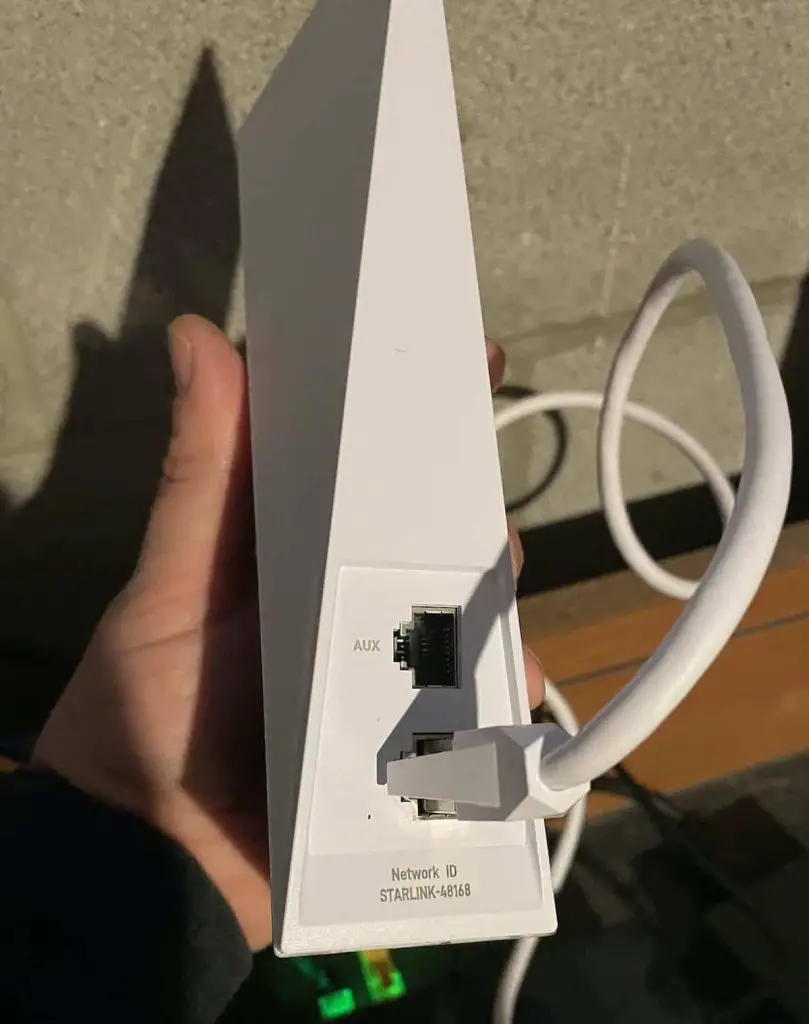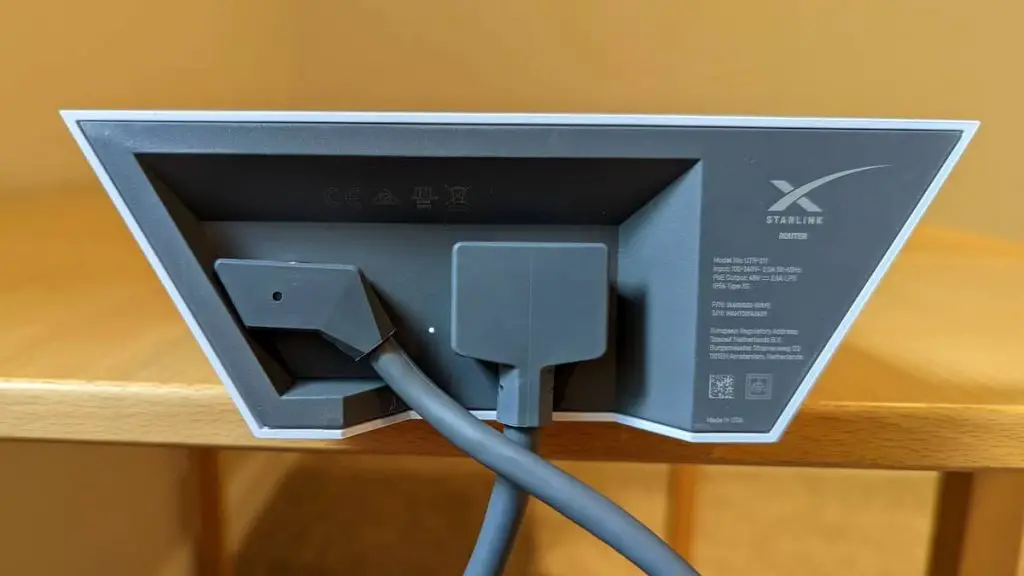Starlink routers are at the forefront of reshaping how we connect to the internet. Starlink routers are crucial in establishing a reliable and robust connection between the user’s devices and the vast Starlink satellite network to achieve seamless connectivity. These routers bridge the user’s local network and the Starlink constellation. They facilitate the transmission and reception of data packets, optimizing the flow of information and ensuring a smooth user experience. With their robust capabilities, Starlink routers empower users with fast and reliable internet access, opening up new avenues for productivity, entertainment, and communication.
To better understand why the Starlink router is such a vital part of the connection, below is a complete review explaining everything.
Contents
Starlink Router Types
Starlink has emerged as a transformative force in internet connectivity, revolutionizing how we access the digital world. As part of the Starlink satellite internet constellation, two generations of Starlink routers have been developed, each designed to empower users with seamless and reliable internet access. The two types of routers include:
1. Gen 1 Starlink Router

The Generation 1 Starlink router, released in 2019, is the earlier and first model of Starlink routers. Its specifications include the following:
- Qualcomm IPQ4018 SoC processor.
- Supports Wi-Fi 5 (802.11ac)
- Offers a dual-band frequency (2.4GHz and 5GHz).
- Wi-Fi range of up to 2,000 square feet
- It can simultaneously accommodate up to 128 devices.
- one Gigabit Ethernet LAN port for wired connections
- Supports internet plans with up to 500 Mbps speeds.
- Features MU-MIMO technology (2 x 2 configuration) for efficient data transfer.
- WPA2/WPA3 encryption Network security
2. Gen 2 Starlink Router

The Generation 2 Starlink router, introduced in 2021, is the latest router model present. Its specifications include the following:
- Uses the MediaTek MT7629 SoC processor
- Supports Wi-Fi 5 (802.11ac)
- operates on dual-band frequencies (2.4GHz and 5GHz)
- Wi-Fi range of up to 2,000 square feet
- It can handle up to 128 devices concurrently.
- Supports internet plans with speeds up to 500 Mbps
- WPA2/WPA3 encryption network security.
- It features an upgraded MU-MIMO configuration (3 x 3) for improved network performance
Check out Starlink Gen 3 Router: What’s New!
Starlink Router Specs
Design
There are several significant differences in the design and wired connectivity of the Starlink routers. The Starlink Gen 2 router deviates from the circular dish design of the first-generation model and instead adopts a sleek square-shaped design. This design choice not only sets it apart aesthetically but also offers practical benefits in terms of space efficiency.
The Gen 2 router’s smaller size is particularly noteworthy, as it contributes to its reduced weight of just 9.2 pounds, a significant improvement over the 16 pounds of the previous generation. The combination of aluminum and plastic materials used in both router models ensures a visually appealing and sturdy construction, offering a sense of reliability.
Wired Connectivity
The Starlink Gen 1 router boasts an Ethernet port on its rear side, allowing users to establish high-speed wired connections. With Gigabit speed capacity, this Ethernet port allows lightning-fast data transfer rates. The Starlink Gen 2 router does not feature built-in Ethernet ports. However, for those who prefer the reliability and stability of a wired connection, an Ethernet adapter is available for separate purchase. This adapter allows users to connect with the Gen 2 router, enabling a performance and data transfer speed similar to the Gen 1 model.
Wi-Fi Range
The Wi-Fi coverage of the Starlink Gen 1 and Gen 2 routers offers maximum coverage of 2,000 square feet. During practical testing, the Wi-Fi signals from both routers remained strong and reliable, up to approximately 1,600 square feet. The consistency and stability of the Wi-Fi signals contribute to a seamless browsing and streaming experience throughout the covered area.
However, one unique aspect of the Starlink Gen 2 router is its compatibility with up to 12 mesh nodes. These mesh nodes can be strategically placed throughout the premises to extend the Wi-Fi range by seven to eight times. Including mesh nodes greatly enhances the coverage capabilities of the Gen 2 router, providing a robust Wi-Fi network throughout a significantly larger area.
Device Capacity
The Gen 2 router employs a 3 x 3 MIMO (Multiple-Input Multiple-Output) configuration, while the Gen 1 dish utilizes a 2 x 2 MIMO setup. This difference in MIMO technology translates to more available streams for data transfer and less network congestion. As a result, the Gen 2 router can handle an increased number of devices simultaneously compared to the Gen 1 dish.
Specifically, the device-handling capacity of the Gen 2 router expands from 25 to 35 devices compared to the Gen 1 model. This capacity increase allows more devices to connect to the Wi-Fi network without experiencing a significant drop in performance or speed.
Security Standards
Both Starlink routers prioritize protecting data transmitted through the network. Although they don’t offer any premium or free advanced security features, they come equipped with a reliable security standard right out of the box. The routers implement the WPA3/WPA2 standard, which ensures that the data transmitted over the Wi-Fi network remains secure and protected from unauthorized access. One notable security feature that can be employed with Starlink routers is a Virtual Private Network (VPN). Users can browse the internet using a VPN without compromising their identity or revealing their online activities.
It’s important to note that the security features offered by Starlink routers are more geared toward protecting residential network ecosystems. While they provide a basic level of security, they may not be suitable for commercial settings that involve handling large volumes of data. These routers lack built-in malware protection, which limits their effectiveness in safeguarding against malicious software or cyber threats commonly encountered in commercial environments.
Hardware And Other Features
The Starlink router has advanced hardware components that ensure smooth and efficient network performance. The Starlink routers use an inbuilt MediaTek MT7629 System-on-a-Chip (SoC). This processor combines 2GB of RAM and 1GB of NAND storage, allowing the router to handle network traffic seamlessly and maintain optimal performance even during peak usage. The router’s ample RAM and storage capacity contribute to its ability to handle data transfers quickly and efficiently.
The router’s efficient hardware enables swift and responsive connectivity when connecting a device to the Starlink network and browsing the internet. With minimal latency, users can expect near-instantaneous access to web pages and online content, typically taking only two to three seconds to load.
Furthermore, the generous storage capacity of the Starlink router plays a crucial role in its functionality. The router can store necessary data, firmware updates, and other essential information, ensuring that it remains up-to-date and can operate smoothly. The ample storage space allows for efficient management of network resources, contributing to a congestion-free and reliable network experience.
Starlink Router Setup And Management
Setting up and managing Starlink routers may seem complex, similar to traditional routers. However, the process becomes more straightforward with the help of a compatible application and the provided instruction manual. In the box, you will find the Starlink dish, the router, and an Ethernet PoE cable that must be connected appropriately. Follow the steps outlined below for a successful setup:
- Begin by installing the hardware components. Connect the Starlink dish to its designated location, ensuring a clear line of sight to the sky. Connect the router to a power source and attach it to the dish using the Ethernet PoE cable.
- Once the physical installation is complete, the system will automatically start scanning for the satellite. This involves moving the dish forward and backward and rotating it 360 degrees. This scanning process typically takes around 10-15 minutes, after which the dish will be aligned and ready to establish a connection.
- After the initial setup, it’s time to download the Starlink application on your smartphone. This application is in the app store specific to your device’s operating system.
- Open the Starlink application and navigate to the settings menu. Locate the option to connect to the Wi-Fi router associated with the Starlink system. Select the appropriate network and follow the prompts to establish a connection.
- The application will prompt you to create a network by entering your desired username and password during the connection process. This step allows you to set up a secure and personalized network for your Starlink connection.
- Once the network is created and the connection is established, you can log in to the Starlink system using your chosen credentials. At this point, you are ready to start using the internet through the Starlink router.
The Starlink application is a central hub for managing your router and its settings. The application allows you to access various features and configurations to customize your internet experience. This includes options to adjust network settings, manage connected devices, and monitor network performance. The Starlink application also provides real-time information about your connection, such as signal strength, data usage, and ongoing system updates. This lets you stay informed and make informed decisions about your internet usage.
Conclusion
Starlink routers are a significant advancement in internet connectivity, providing users with high-speed and reliable network access, particularly in areas with limited traditional internet infrastructure. These routers, available in Gen 1 and 2 models, offer distinct features and improvements to cater to evolving user needs.
The design of Gen 2 routers stands out with its sleek and sturdy construction, while both generations provide coverage suitable for mid-sized spaces. Gen 2 routers offer extended coverage options through compatibility with mesh nodes. Moreover, Gen 2 routers have enhanced device handling capacity, allowing for smoother data transfer and reduced network congestion.
Starlink routers feature powerful hardware components that ensure optimal network performance and low latency. They deliver high-speed internet access through wired and wireless connections, offering a reliable and seamless browsing experience.
Overall, Starlink routers overcome the limitations of the traditional internet infrastructure, making internet access more inclusive and accessible, especially in remote areas. With their speed, reliability, and coverage advancements, Starlink routers pave the way for a more connected digital future.

